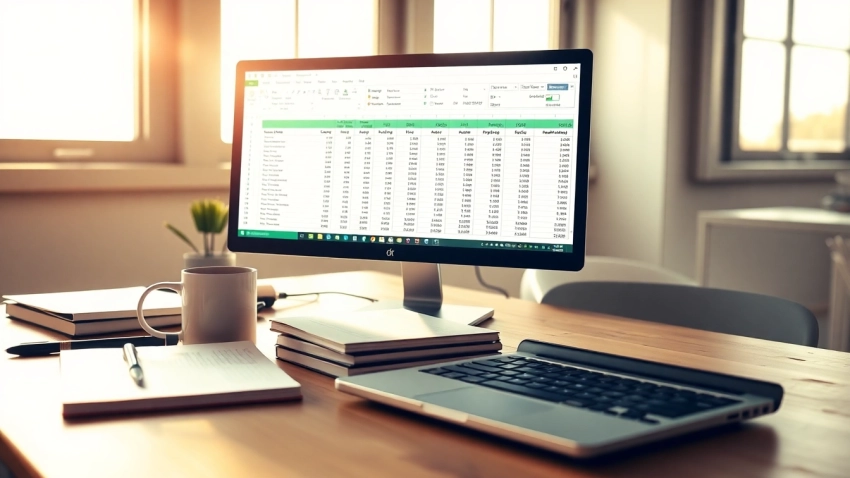
Mastering Competitor Pricing Analysis: Techniques and Strategies for Success
Understanding Competitor Pricing Analysis
What is Competitor Pricing Analysis?
Competitor pricing analysis is a systematic approach to gather, evaluate, and analyze the pricing strategies employed by competing businesses in your market. This process involves collecting data regarding the prices of similar products or services, examining their pricing models over time, and utilizing that information to inform your own pricing decisions. By understanding how competitors position their prices, businesses can strategically align their offerings to remain competitive and meet market demands effectively. For more insights on competitor pricing analysis, organizations can delve into the nuances that impact their market position.
The Importance of Pricing Analysis in Business
Pricing strategies are a significant aspect of any business model since they directly affect profitability, market share, and overall consumer perception. Competitor pricing analysis serves several essential functions:
- Informed Decision-Making: Companies can make well-informed pricing decisions that consider market conditions, competitor actions, and customer expectations.
- Competitive Advantage: By understanding competitors’ pricing strategies, businesses can identify gaps in the market and opportunities for differentiation.
- Trend Identification: Tracking pricing changes over time can signal industry trends, helping businesses stay proactive rather than reactive.
- Customer Insights: Analyzing competitor prices often reveals customer perceptions about value and willingness to pay, which can inform overall marketing strategies.
Key Elements of Competitor Pricing Analysis
When conducting a competitor pricing analysis, there are several key elements to consider:
- Competitor Identification: Knowing who your competitors are, both direct and indirect, is crucial. Identifying the right competitors is foundational to the analysis.
- Data Collection: This step involves gathering pricing information through online research, competitor websites, market reports, and customer feedback.
- Pricing Structures: Understanding variations in pricing structures can reveal different strategies employed by competitors, such as discounting, bundling, or tiered pricing strategies.
- Market Positioning: Analyzing how competitors position their pricing in relation to value propositions helps businesses gauge market expectations.
Steps to Conduct Effective Competitor Pricing Analysis
Identifying Your Competitors
The first step in effective competitor pricing analysis is to define the scope of your analysis. This begins with identifying both direct and indirect competitors. Direct competitors offer similar products or services, while indirect competitors might provide alternative solutions that satisfy the same consumer needs. Tools such as SWOT (Strengths, Weaknesses, Opportunities, Threats) analysis can also enhance understanding of competitive positioning.
Data Collection Methods for Accurate Pricing
Once competitors are identified, the next step is data collection. Employ various methods to gather pricing information:
- Website Analysis: Review competitors’ websites for pricing details, promotional offers, and special discounts.
- Market Research Reports: Leverage third-party reports that provide insights into industry pricing benchmarks.
- Customer Feedback: Engage customers through surveys or reviews to gather opinions on perceived value and pricing acceptance.
- Competitor Products: Purchase competitors’ products to assess the tangible value versus the price.
Analyzing Pricing Data for Insights
After gathering data, it’s essential to analyze it for actionable insights. Key steps include:
- Comparative Analysis: Compare the collected data against your own pricing to determine gaps and opportunities.
- Trend Tracking: Look for patterns over time, such as seasonal pricing shifts or responses to competitor promotions.
- Customer Segmentation: Analyze how different customer segments respond to pricing variations among competitors.
Tools and Resources for Competitor Pricing Analysis
Top Software for Pricing Analysis
Leveraging technology can streamline the process of gathering and analyzing competitor pricing data. Here are some popular tools:
- Competera: Offers dynamic pricing solutions by analyzing competitor prices and suggesting optimal pricing strategies.
- Price2Spy: A flexible price monitoring software that helps businesses track their competitors’ pricing changes comprehensively.
- Wiser: Provides competitive pricing data and price optimization strategies, enabling users to stay competitive in real-time.
Utilizing Market Research Reports
Market research reports can provide essential insights that are often difficult to gather through individual efforts. These reports, available from sources like IBISWorld or Statista, consolidate data on pricing trends, market forecasts, and economic factors affecting pricing across industries. They can offer valuable context for your own pricing strategies.
Leveraging AI Tools for Data Analysis
Artificial Intelligence (AI) tools can enhance competitive pricing analysis by automating data collection, providing predictive analytics, and delivering insights in real-time. Utilizing machine learning algorithms allows businesses to adapt swiftly to market changes and optimize pricing accordingly.
Common Challenges in Pricing Analysis
Difficulties in Collecting Accurate Data
One of the most significant challenges in pricing analysis is acquiring accurate and reliable data. Due to the dynamic nature of pricing and potential discrepancies between advertised and actual prices, businesses often struggle to gather the necessary information. Solutions include setting up alert systems to monitor competitor website changes and engaging third-party data services.
Interpreting Competitive Landscape
Understanding the competitive landscape can be complex, given the diverse factors influencing pricing, including regional differences, economic conditions, and consumer demand fluctuations. Employing frameworks like Porter’s Five Forces can aid in contextualizing competitive dynamics and enhancing strategic planning.
Staying Updated with Market Changes
The marketplace is continually evolving; therefore, businesses must implement a robust tracking system to keep pace with dynamic pricing trends. Regularly scheduled analyses, combined with market monitoring tools, can help businesses stay agile and responsive to changes.
Best Practices for Implementing Competitor Pricing Analysis
Integrating Price Analysis into Business Strategy
To maximize the potential of competitor pricing analysis, organizations should integrate these insights into their overall business strategies. This means aligning pricing tactics with broader marketing and sales strategies to ensure cohesive and targeted messaging.
Monitoring Competitive Pricing Trends
Establish a routine for monitoring competitor pricing trends consistently. This can involve setting alerts for competitor changes or scheduling weekly or monthly reviews of critical pricing metrics to identify patterns over time.
Adapting Your Pricing Based on Insights
Utilizing insights from competitor pricing analysis should result in proactive adjustments to your pricing strategy. Whether it’s through promotional discounts, bundling products, or re-evaluating pricing structures, adapting based on comprehensive analysis will better position your business to thrive in a competitive landscape.












Leave a Reply